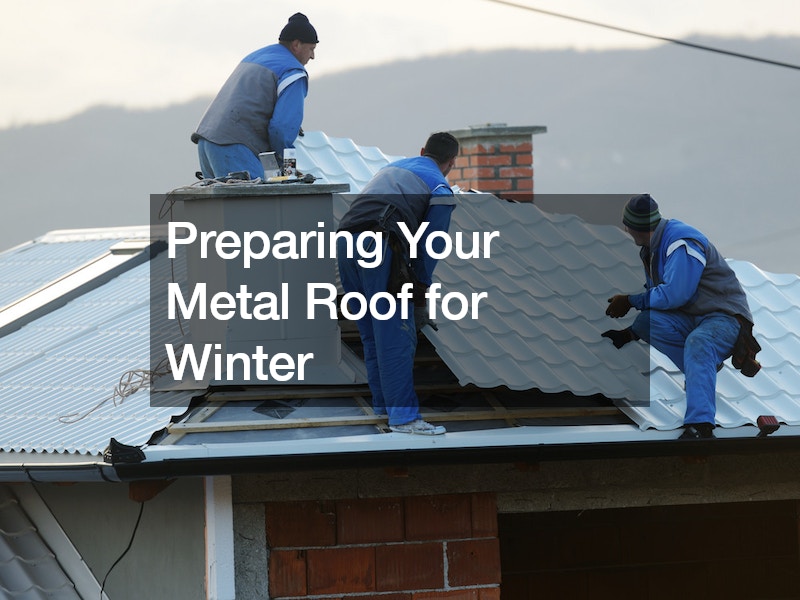
Homeowners have a responsibility to keep the roofs of their homes intact. People who prefer asphalt shingles often choose to install the traditional pattern of interlocking shingles. Some homeowners may choose a combination of metal and shingle roofing due to their improved appearance. Did you know that a combination roof typically costs less than a roof made solely from metal?

Why Metal Roofing Is Preferred
According to Architectural Digest, metal is the preferred roofing material of many home contractors due to its endurance, efficiency, and low maintenance. This makes it a great option for you. The initial cost of installing a metal roof is more expensive, but the investment is considerably worth it due to the quality of the materials. If a homeowner decides to get a metal roof, the best type of metal roofing is considered to be aluminum roofing. According to Decra, aluminum roofs are more durable and affordable when compared to other roof metals.
Metal Roofs Have Several Patterns
Metal roofs can be found in many patterns and colors. For example, grand rib metal roofing is famous for large buildings like barns. That pattern features flat metal patterns with ribbed edges. Its flat slope protects its building in rain and snowy weather conditions,
White sheets of snow on roofs mark the beginning of winter. The appearance of these flakes may be striking, but the extra weight caused by snow can ruin your metal roof. Whether you are dealing with commercial roofing or residential roofing, it is imperative for you to maintain your roof thoroughly to improve its chances of survival.
Different types of roofs have different lifespans depending on the materials from which they are made. Metal roofs, for example, can last for up to 50 years with proper maintenance. Routine maintenance of your residential roofing doesn’t necessarily require the input of a professional if you know what to do. However, you need to be alert enough to know when the maintenance is no longer routine and call in a professional metal roof contractor.
With that said, here are some tips you could use to maintain the integrity of your roof.
Conduct Roof Integrity Inspections.
Establish whether your roof is sagging. Sagging is an indication that something is seriously wrong with the frame of the roof. Additional snow during winter can only exacerbate the problem. You can check for roof sagging either from inside the attic or from the outside.
Sagging is likely to be more easily noticeable on metal roofing than on other types of roofing because of their steeper slopes. Once you notice sagging, contact your local roofing contractor for a better assessment of the frame and recommendations on what needs to be done to rectify the situation.
Trim Overhanging Trees
Both commercial and residential roofs are at risk from overhanging trees during winter. The trees carry extra weight from snow, which makes it easier for branches to break. If a branch falls on the roof, it is likely to cause extensive damage. Trimming trees is, therefore, an important preventive measure.
Paint and Seal
Metal roofers will tell you that painting your roof is an essential undertaking in maintenance. When a roof has an additional coat of paint and sealant is added, your roof is protected from excess moisture. This extends the lifespan of the roof.
Painting can further prevent the growth of dangerous mold on your roof.
Avoid the Formation of Ice Dams
You need to clean your gutters before the onset of winter. As after the fall, your gutters are likely to have leaves in them. Clean gutters ensure that water flows smoothly. If the gutters are not clean, debris keeps the water from flowing, and it freezes inside the gutters due to the prevailing low temperatures. This freezing leads to the creation of ice dams, which in return contribute to the destruction of your roof.
You can further prevent the formation of ice dams by ensuring that your attic is properly vented and insulated. Insulation of your roof can be compromised by water damage. When a roof is not insulated, it allows heat to escape through it, after which the snow melts. The excess water may end up compromising the effectiveness of gutters. A properly insulated and vented attic ensures that warm air flows into the gutters causing snow in the gutters to thaw and flow naturally without compromising the roof.
Equip Yourself For Deicing
Sometimes when snowfall has been exceptionally heavy, you need to remove it from your roof. In some cases, ordinary residential roofing is small enough for you to deice in person without having to pay for it.
Small as the roof may be, it is a bad idea for you to get on the roof with a shovel to remove the snow! It is risky as you can easily slide and fall, and it can also compromise the structural integrity of your roof. To be safe, purchase a snow rake which is appropriately designed for use from the ground.
Ask for Professional Help
It is always good to have some roof care DIY skills. However, certain things are beyond the skill set of a non-specialist, no matter how good they are. Should you encounter a situation you are not sure you can handle concerning your commercial or residential roofing, it is always safer to contact a roofing contractor.
